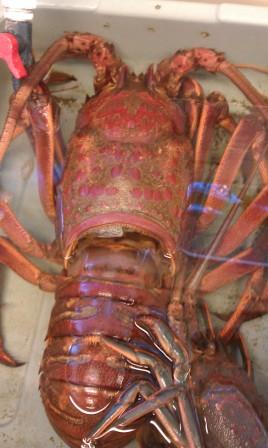
A discarded lobster shell after molting
Okay, it’s time for more on lobster molting…something I would never want to experience firsthand, except to watch it. I found the section in “The Secret Life of Lobsters” by Trevor Corson on molting, for anyone interested it begins on page 35. So a lobster wears its skeleton on the outside, this is very rigid shell, a tough exterior built to withstand at least a few armed assaults. But when it comes to expanding or growing, the shell is completely inflexible, leaving only one option: rip it off.
As Corson explains, the shell is a “fixed size” and must be discarded in the name of progress. Now here’s a fascinating tidbit from the book: “If a lobster’s bodily functions went unregulated, the animal would be in a constant state of shedding its shell and growing a new one. Such exhibitionism would make normal life impossible, so lobsters have glands inside the stalks of their eyes that release a hormone that inhibits molting.”
But wait it gets better as we turn to page 36: “A combination of cues, including warming temperatures and longer days, constrains the production of the hormone and releases steroids that begin the molt cycle… In the weeks prior to molting, the lobster’s skin cells enlarge and secrete the beginnings of an entirely new shell underneath the old one…When the lobster is ready to shed, it pumps in seawater and distributes it through its body causing hydrostatic pressure to force the old shell away from its body.”
Corson goes on to explain that molting can be extra tough for American lobsters because they must pull their large claws out through the much skinnier part of their old shell that is their version of wrists. In order to do this, they must lose close to half the weight of their claws before molting to pull it off successfully.
But the worst part is at the end: “Because a lobster is an invertebrate, every anatomic feature that is rigid is part of the exoskeleton, including the teeth inside the stomach that grind food. The lobster must rip out the lining of its throat, stomach, and anus before it is free of the old shell. Some die trying.”
To survive, lobsters must become exoskeleton ripping machines. The largest lobsters are molt masters, schooled in the art of rip and ditch. But what happens right after the molt when the new shell isn’t quite in place yet? Stay tuned…
Glands inside the stalks of their eyes? Sometimes oceanography is like a sci-fi flick!
wow! i have a newfound respect for lobsters! rip out the lining of its throat, stomach and anus??? holy crap! that’s intense…and somehow fascinating…